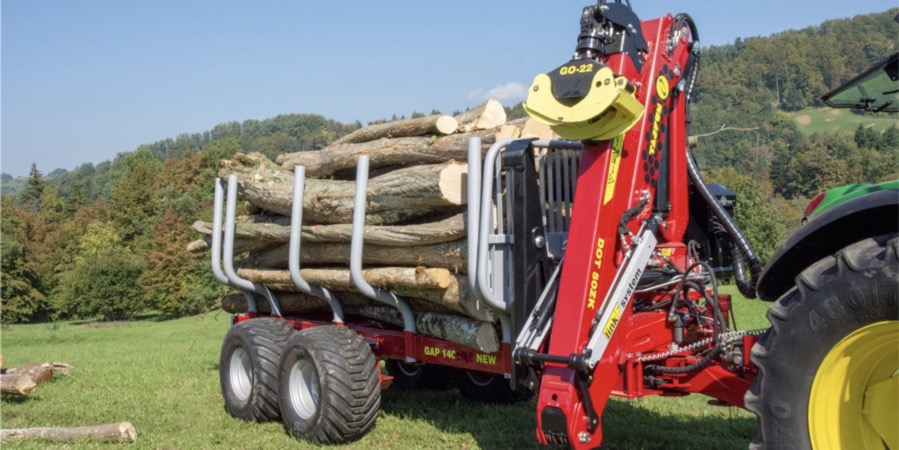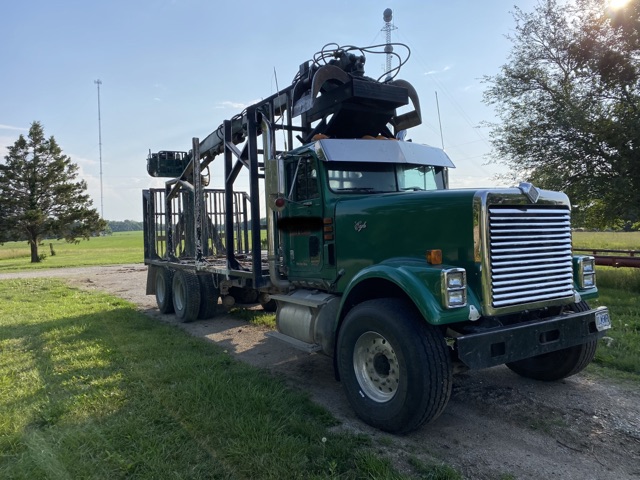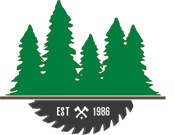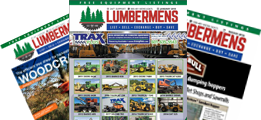Table of Contents Introduction: Why Sawmill Maintenance Matters Sawmill Maintenance Equipment List Sawmill Maintenance Guide: Daily, Weekly & Monthly Tasks What Are the Items to Be Included in Routine Maintenance? What Are the Basic Maintenance Procedures for a Sawmill? Conclusion: Keeping Your Sawmill Running Smoothly Key Takeaways: Sawmill maintenance extends machine lifespan and boosts productivity. […]
Smart Choices: Key Benefits of Buying Used Forestry Equipment
Forestry equipment is a fundamental investment for anyone in the forestry industry, as it helps to ensure that work is carried out efficiently and accurately. Regardless of whether you work in logging, tree planting, or forest management, exploring the most utilized equipment is crucial to getting the job done right.
However, the high cost of new forestry equipment can be a significant barrier for many businesses and individuals. That’s why buying used forestry equipment can be a smart choice, as it can save you a considerable amount of money without sacrificing quality.
In this blog post, we’ll explore the key benefits of buying used forestry equipment in detail. Here are some key benefits of buying used forestry equipment:
- Cost Effectiveness
- Quality and Reliability
- Immediate Availability
- Customization and Upgrades
- Environmental Benefits
- Expert Insights
- Warranty and Support
1. Cost-Effectiveness
Purchasing used forestry equipment comes with several benefits, but one of the most significant advantages is its cost-effectiveness. Unlike new equipment, used equipment comes at a lower initial purchase price, which can help you save a considerable amount of money in the long run.
Furthermore, used equipment has already undergone the majority of its depreciation and resale value, which means that it will retain its value much better than new equipment. This makes it a wise investment for businesses looking to maximize their return on investment and get the most out of their purchase.
2. Quality and Reliability
In addition to cost-effectiveness, buying used forestry equipment also offers the benefit of quality and reliability. Reputable brands are known for producing equipment that is durable and built to last, and this is no different from used equipment.
When purchasing used equipment, it’s important to look for well-maintained pieces that have been properly cared for. These machines often have many years left of service life and can be just as reliable and efficient as brand-new equipment.
By investing in used equipment, businesses can get the equipment they need without having to compromise on quality or performance. This is particularly important in the forestry industry, where equipment durability is critical to ensure safe and efficient operations.
3. Immediate Availability
Another significant benefit of buying used forestry equipment is its immediate availability. When purchasing new equipment, businesses often have to deal with long lead times, which can cause delays in getting the equipment needed for a job.
On the other hand, used equipment is often immediately available and ready to use, making it an attractive option for businesses that need equipment quickly to meet deadlines or take advantage of time-sensitive opportunities. By choosing the best forestry equipment in a used condition, businesses can bypass manufacturing lead times and start using the equipment right away. This can help businesses to operate more efficiently, complete projects on time, and meet the needs of their customers promptly.
4. Customization and Upgrades
Used forestry equipment can often be customized or upgraded to specific needs. Different types of forestry equipment can be modified to suit individual requirements, and cost-effective upgrades and attachments can be added to enhance performance.
This level of flexibility is not always available with new equipment, making used equipment a smart choice for those who need customized solutions. This means that businesses can get the equipment they need without having to compromise on their specific requirements.
5. Environmental Benefits
Buying used forestry equipment has numerous environmental benefits. Recycling and reusing equipment reduces the environmental impact of manufacturing new products, as it minimizes the need for extracting and utilizing new raw materials.
By purchasing used equipment, you can help reduce your carbon footprint compared to new manufacturing. This sustainable option makes a positive impact on the environment by conserving natural resources and reducing waste. In addition, using used equipment contributes to reducing the greenhouse gas emissions associated with the production and distribution of new equipment.
6. Expert Insights: What to Look For
Before buying used forestry equipment, there are some things to consider. It’s essential to inspect and evaluate the equipment thoroughly before making a purchase. Identifying potential issues and assessing the condition of the equipment are critical steps in ensuring the equipment is in good working order. It’s also important to consider the reputation of the seller and the level of support and maintenance services they provide.
7. Warranty and Support
When purchasing used forestry equipment, it’s essential to consider the availability of warranties and vendor support. A warranty can give you added peace of mind and protect your investment in case the equipment breaks down unexpectedly. It’s important to choose a reputable seller that offers warranties that cover a reasonable time frame, and that also include repairs and maintenance services.
Furthermore, vendor support is crucial in ensuring that the equipment continues to perform at its best. A reliable vendor can provide you with technical assistance, replacement parts, and repairs if needed, which can help you save time and money in the long run.
Conclusion
In conclusion, buying used forestry equipment offers numerous benefits, including cost-effectiveness, quality and reliability, immediate availability, upgrade options, and environmental benefits.
By choosing used equipment, businesses can save money, maximize their return on investment, and get the equipment they need without compromising on quality or performance.
Additionally, used equipment can help reduce environmental impact and support sustainable forestry practices. With the right inspection, evaluation, and support, used forestry equipment can be a smart choice for businesses in the forestry industry.









